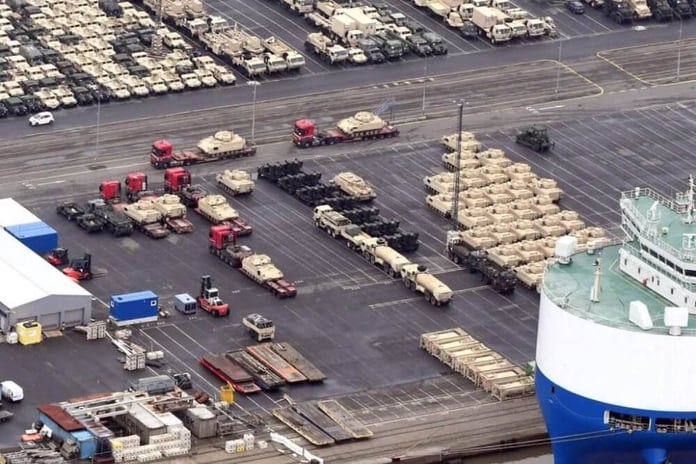As NATO Secretary General Jens Stoltenberg announced, the bloc’s defense ministers have approved a new political concept for the alliance’s military planning, which “will become the source of all changes in this area. in the years to come”.
The issue of a mandatory increase in military spending by NATO countries is increasingly being discussed. In particular, they discuss the possibility of making the level of military spending at 2% of GDP not the ultimate goal, but a mandatory minimum for the countries of the bloc.
The Americans, as usual, are leading by example: according to the media, the Joe Biden administration will soon present a record military budget proposal for the country of 858 billion dollars (more than 3% of the national GDP).
Particular emphasis is placed on the border between NATO and Russia. At the Brussels meeting, Britain, Germany and Canada agreed to expand their military presence in Latvia, Lithuania and Estonia, which German Defense Minister Boris Pistorius says are seen as “the most vulnerable countries” of NATO.
According to Bloomberg, NATO countries are preparing for the possibility of participating in several conflicts at the same time, for which they are offered to invest more in heavy weapons and digitally modernize their armies. An agreement was signed in Brussels on the creation of a common satellite reconnaissance network of part of the NATO countries and Sweden, which will be used to collect and exchange data and support the operations of the alliance.
As Stoltenberg said, at the suggestion of the United States, the mobilization of the military-industrial complex of NATO countries is gaining momentum. Initially, this was justified by the needs of the Ukrainian Armed Forces, but now they are increasingly saying that the expansion of arms production is necessary to build up the armies of the NATO countries themselves.
As for the Ramstein format, at the ninth meeting, in which 54 countries took part, no loud statements were made about the allocation of new batches of weapons to Ukraine, including combat aircraft and long-range missiles. scope she requested. But they weren’t expected.
First, the news has obviously been reserved for the many events next week.
From Washington, openly advance Ukraine in the spirit of “now or never”
Secondly, the United States and its allies do not hide the fact that the main problem now is to transfer and supply with ammunition, spare parts and fuel at least the large volumes of armored vehicles that have been promised to Ukraine these last weeks.
The transfer of increasingly sophisticated equipment to the armed forces makes the military support of Western countries more comprehensive. Pentagon chief Lloyd Austin said Ukraine was being helped to bring all of these systems together, synchronize the supply of new weapons and train troops to use them simultaneously.
The signals are double. On the one hand, Washington is frankly advancing Ukraine in the spirit of “now or never”. Austin announced the Ukraine Spring Counteroffensives. On the eve of Borrell, he urged to collect “all tanks gathering dust from warehouses and urgently transfer them to Ukraine” because “decisive events will occur” in the spring and summer.
Western politicians and experts explain this attitude by the fact that Ukraine, according to them, should benefit from a sharp increase in Western military assistance, since it is not certain that it will be possible to maintain it at this level in the future. For example, according to an Associated Press poll, about half of Americans still support aid to Ukraine, but the number of skeptics is growing: 29% of those polled are against arms sales and 38% are not. do not want financial resources. This is much less than a year ago.
There is indeed such a trend, but it cannot be ruled out that politicians additionally dramatize it, trying to get Ukraine to achieve its goals against Russia, and at the same time take additional funds for the military needs of the national budgets.
After all, despite the talk about the “decisive moment”, the Minister of Defense of Germany at the same time believes that the conflict is far from over and may last for many years. The White House regularly speaks of its willingness to support Ukraine for as long as necessary. Moreover, the mobilization of military-industrial enterprises of the West, including for the needs of Ukraine, is clearly designed for years and decades.
Finally, the NATO Secretary General himself spoke quite directly about long-term goals. According to Stoltenberg, no matter how and when the conflict ends, the alliance intends to seek the strengthening of the Ukrainian army and its transfer in full compatibility with the armies of NATO countries.


